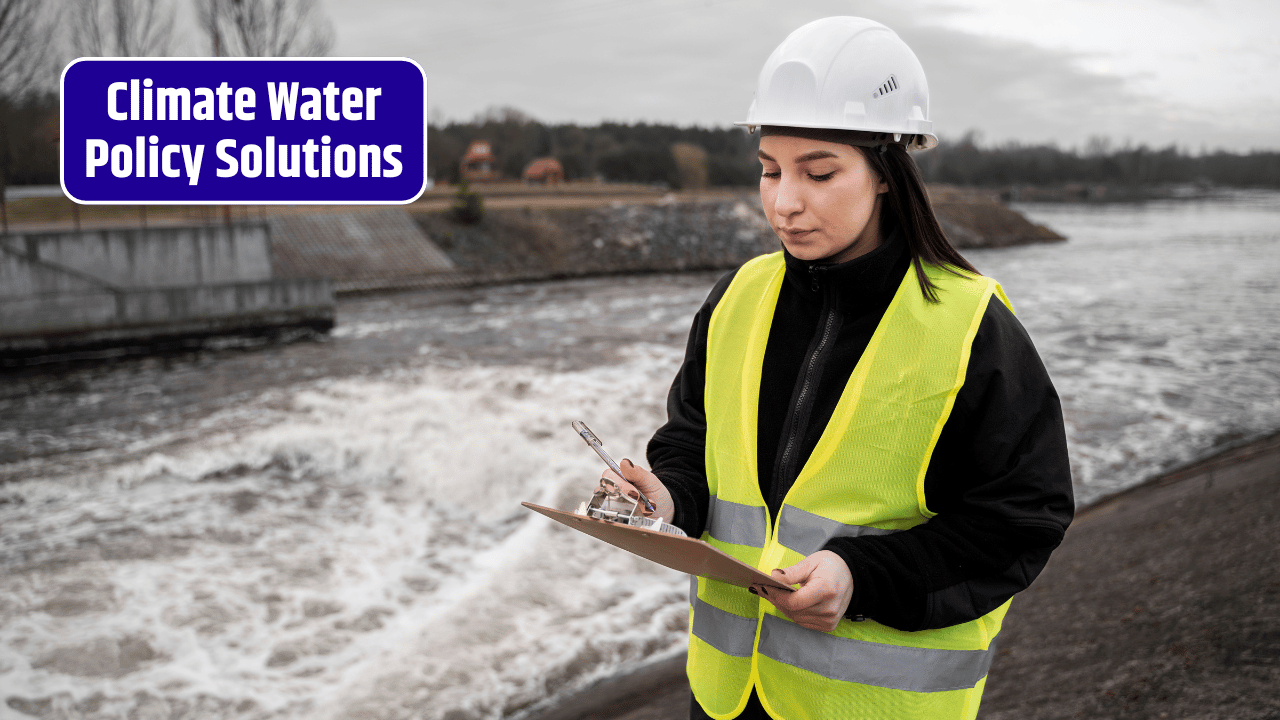Climate change is intensifying water stress across the United States, pushing aging infrastructure to its limits and threatening water security for millions. Rising temperatures, prolonged droughts, heavier storms, and shifting precipitation patterns are placing new demands on systems designed for a different climate era. As the gap widens between water supply and demand, it’s clear that the U.S. needs bold, coordinated policy responses to modernize water infrastructure, promote conservation, and ensure long-term sustainability.
Table of Contents
Understanding Climate-Driven Water Stress
Water stress occurs when water demand exceeds available supply or when poor quality limits usability. Climate change amplifies this by disrupting both supply (e.g., shrinking snowpacks, drying rivers) and increasing demand (e.g., higher irrigation needs during droughts).
Key Climate Impacts on Water Systems:
- Droughts and heatwaves strain reservoirs and aquifers
- Erratic precipitation affects planning and reservoir operations
- Flooding overwhelms stormwater and wastewater systems
- Sea-level rise causes saltwater intrusion into freshwater sources
- Wildfires pollute watersheds and compromise water quality
These climate effects are turning short-term emergencies into long-term challenges.
The Urgent Need for Policy Action
The U.S. water sector faces a growing infrastructure investment gap, currently estimated at over $400 billion by 2040, according to the American Society of Civil Engineers (ASCE). To bridge this divide and enhance climate resilience, policymakers must pursue solutions that address supply, efficiency, equity, and innovation.
Key Policy Responses to Address Water Stress
1. Modernize Water Infrastructure
Aging systems are more vulnerable to climate extremes. Upgrades should include:
- Replacing lead and aging water pipes
- Improving stormwater and wastewater systems
- Expanding smart water technology adoption
- Building climate-resilient treatment and distribution facilities
Federal programs like the Infrastructure Investment and Jobs Act (IIJA) and EPA’s State Revolving Funds (SRFs) offer critical support, but sustained investment is necessary.
2. Promote Integrated Water Resource Management (IWRM)
IWRM emphasizes holistic planning that connects water supply, wastewater, and stormwater systems with land use and climate adaptation strategies.
- Encourages basin-wide planning
- Aligns water use with environmental conservation
- Supports cross-agency and cross-jurisdictional coordination
3. Incentivize Water Efficiency and Conservation
Smart policies can drive efficiency in agriculture, industry, and residential use:
- Tiered water pricing structures to reflect true costs
- Water use efficiency standards for appliances and irrigation
- Rebate and incentive programs for conservation technologies
- Leak detection and repair initiatives at municipal levels
4. Expand Water Reuse and Recycling
Water reuse reduces dependency on uncertain freshwater supplies. Policies should:
- Set clear recycled water quality standards
- Provide funding for non-potable and potable reuse infrastructure
- Streamline permitting processes for reuse projects
5. Strengthen Groundwater Governance
Aquifers are a vital drought buffer, but many are being depleted faster than they recharge.
- Enforce sustainable yield limits on withdrawals
- Support groundwater recharge projects and incentives
- Require monitoring and metering to improve accountability
- Promote data transparency across agencies and users
6. Support Green and Nature-Based Infrastructure
Nature-based solutions increase resilience while delivering co-benefits for ecosystems and communities.
- Fund wetlands, urban green spaces, and permeable surfaces
- Encourage green stormwater infrastructure in urban planning
- Integrate with flood management and habitat restoration policies
7. Prioritize Equity and Access
Underserved and rural communities often face the highest water-related risks and the least capacity to adapt.
- Direct funding and technical assistance to disadvantaged areas
- Ensure affordability protections in utility rate structures
- Require equity impact assessments in infrastructure planning
- Foster community engagement in water governance decisions
A Coordinated Federal-State-Local Approach
Tackling climate-driven water stress demands coordination across all levels of government and across sectors. Key actions include:
- Aligning state water plans with federal climate goals
- Creating interstate water agreements for shared resources
- Empowering local water agencies with funding and flexibility
- Developing real-time climate data and modeling tools for planners
A Sustainable Path Forward
Water is the foundation of public health, food security, energy production, and economic growth. As climate change accelerates water stress, policy must evolve to keep pace. The most successful strategies will be those that integrate infrastructure investment with conservation, equity, innovation, and ecosystem stewardship.
FAQs
What is climate-driven water stress?
It’s a condition where water availability is strained due to climate impacts like drought, floods, and temperature extremes, making it harder to meet human and environmental needs.
Why is water reuse important?
Recycling wastewater reduces demand on freshwater sources and provides a drought-resistant supply for irrigation, industry, and even drinking when treated properly.
What role do state and local governments play?
They manage most water infrastructure and set water use policies. Their actions are critical to implementing climate-resilient practices on the ground.
Can water pricing help conservation?
Yes. Tiered or seasonal pricing structures can incentivize users to reduce waste and use water more efficiently.
How can policy ensure water equity?
By prioritizing funding for underserved communities, capping household costs, and involving residents in planning decisions.














